The Taurids will become apparent in late October, followed by the Orionids and October Draconids. In the upcoming months, we can anticipate multiple meteor showers following the delightful summer meteor showers we have already experienced.
October’s First Meteor Shower … The Draconids
On the mornings of October 8 and 9, in 2023, you might be able to catch the waning crescent moon and witness the Draconid meteor shower under ideal dark sky conditions. During the peak hours of midnight to morning, you may have the opportunity to see up to 10 Draconid meteors per hour. Unlike most years, the Draconid shower is typically a sleeper, only producing a handful of languid meteors per hour. However, if the fiery Draco constellation decides to spew forth hundreds of meteors in a single hour, it will be a real oddity. Keep in mind that this shower is known to keep skywatchers outside even during moonlight hours, as the radiant point of the shower stands highest in the dark sky. Note that the quarter moon will be in its waning phase on October 6, 2023, so you may have the chance to catch the Draconids without any interference from the moon.
Learn more: Everything you need to know about Draconid meteor showers.
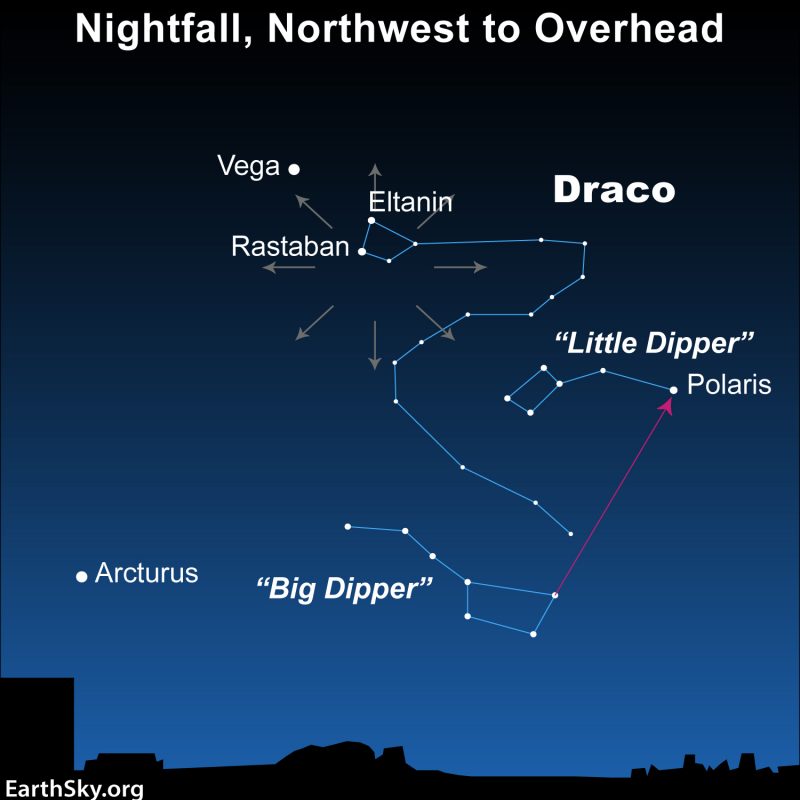
Orionids, the Meteor Shower of Late October
Bright fireballs occasionally generate the Orionids. These meteors, which move quickly, are most active during a specific time frame, typically from 10 to 20 meteors per hour. The Orionids can be observed under ideal conditions, which include a dark sky without interference from the moon. The best viewing time is around midnight when the moon is not present to obstruct the meteor shower.
Learn more: All the information you need about Orionid meteors.

From October to early November … The Southern and Northern Taurids
Here is the revised output: The video and photos of the Taurid fireballs in 2015 were really fun! The Taurid fireball display in 2015 produced them as well as in 2022 and 2008 with a periodicity of seven years, as pointed out by the American Meteor Society. The Taurid fireballs sometimes produce showers of very bright but slow-moving meteors. Note: Also, make sure to watch for Taurid meteor showers, which produce about five meteors per hour. Under ideal conditions of dark skies with no moon, you can catch Taurid meteors throughout November and October. Check the rising moon times for your location. Visit Sunset and Sunrise Calendars to see the times of the rising moon. The peak of the Taurid meteor showers is predicted to be around the second new moon in November 2023. The moon should not interfere too much before midnight and after dawn, and each night the moon should be less bright as it wanes gibbous. However, in 2023 the Taurids will compete with moonlight, as there will be an overlap of the two showers in late October. So, the last quarter moon falls on November 13, 2023, and the new moon falls on November 5. The moon should not interfere too much before midnight and after dawn, and each night the moon should be less bright as it wanes gibbous. You can catch Taurid meteors throughout November and October when the moon is near its peak predicted first quarter. However, in 2023 the Taurids will compete with moonlight, as there will be an overlap of the two showers in late October. So, the last quarter moon falls on November 13, 2023, and the moon will compete with Taurids for moonlight. There will be an overlap of the two showers in late October. So, the last quarter moon falls on November 13, 2023. The Taurids will compete with moonlight, as there will be an overlap of the two showers in late October. The Taurids run from September 23 to November 13, with the peak in November. The North Taurids are active from November 12 to September 23, while the South Taurids are active from October 13 to November 13. The North Taurids peak in the early evening sky around midnight. The South Taurids peak in the early evening sky around midnight. The Taurids don’t have very definite peaks. The North Taurids and South Taurids are most active from November 12 to September 23. The peak of the North Taurids is predicted to be at 21:00 UTC on November 13, 2023. The peak of the South Taurids is predicted to be at 47:00 UTC on November 6, 2023.
Learn more: Everything you should be aware of regarding the Taurid meteors.

Mid-November shooting stars … The Leonids
The Lion whimpers instead of roars in most years. Additionally, the Leonids during the turn of the century – while magnificent for numerous observers – did not match the meteor shower of 1966. Leonid meteor storms occasionally repeat in cycles of 33 to 34 years. Some individuals who witnessed it had a strong perception of Earth moving through space, traversing the meteor stream. On that particular night, Leonid meteors briefly descended like rainfall. Rates reached as high as thousands of meteors per minute during a 15-minute period on the morning of November 17, 1966. Please note that the renowned Leonid meteor shower generated one of the most remarkable meteor storms in recent memory. Under a dark sky devoid of moonlight, you may observe 10 to 15 Leonid meteors per hour. The anticipated number of meteors at its peak, under optimal conditions, suggests minimal interference from moonlight in 2023. The closest moon phase will occur on November 20, 2023, with a first quarter moon. The radiant point rises around midnight and reaches its highest point in the sky at dawn. The shower will last from November 3 to December 2. The recommended viewing time is late on the night of November 17 until dawn on November 18. The morning of November 17 may also prove to be worthwhile. The peak is predicted to occur on November 18, 2023, at 5:33 UTC.
Learn more: Everything you need to understand about Leonid meteor showers.
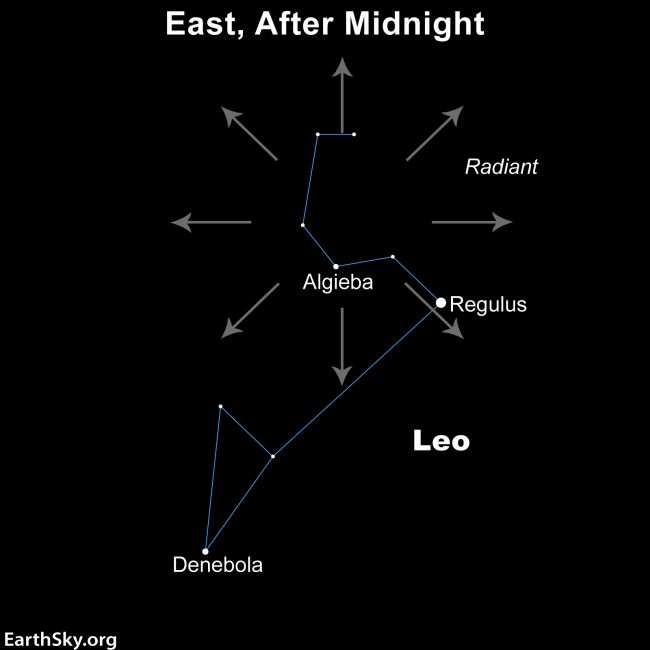
Meteors in the Early to Mid-December Period… The Geminids
And 13 December are the peak dates to watch the Geminids meteor shower in 2023. During these nights, you can watch the Geminids in the evening when the radiant rises in the mid-in. Additionally, the young waxing crescent moon will not interfere with the visibility of the Geminids. So, under ideal conditions with a dark sky, you may be able to catch up to 120 meteors per hour during the peak of the Geminids. It is worth noting that the best showers are usually visible from the Northern Hemisphere, but the Southern Hemisphere also offers a plentiful display of meteors during the Perseids in August.
Learn more: Everything you need to understand about Geminid meteor showers.
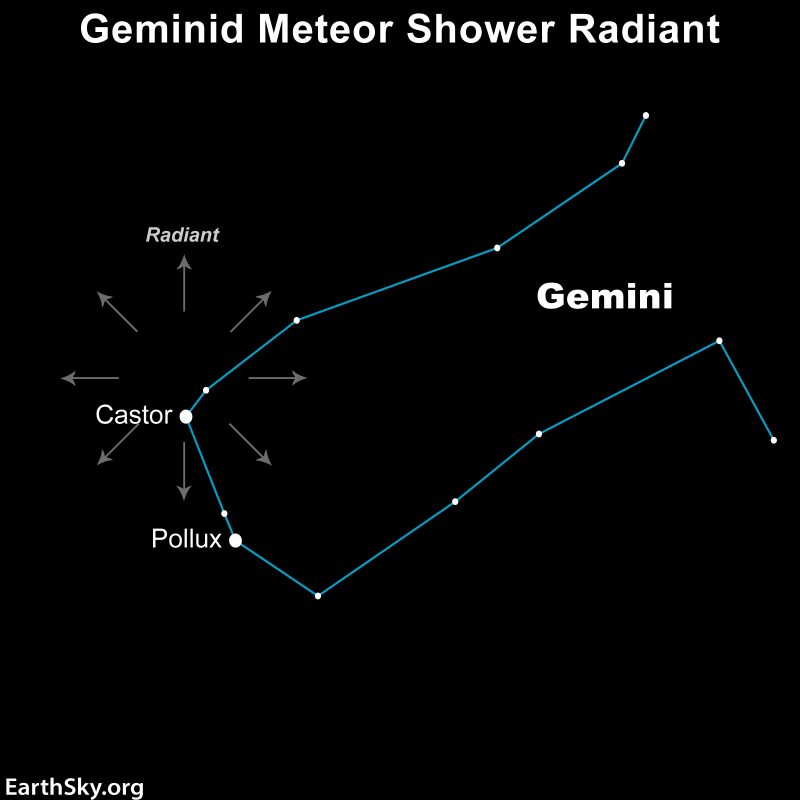
Meteor display during the December solstice… The Ursids
The well-liked Geminid shower, which reaches its highest point just a week before, has a greater hourly rate than this quiet meteor shower – which always reaches its highest point around the solstice – and is somewhat overlooked due to the holiday season. In perfect conditions, the Ursids offer maybe five to 10 meteors per hour at their highest point. The increasing gibbous moon – at 86% brightness – may disrupt the Ursids in 2023 until it sets about three hours before sunrise. A 1st quarter moon occurs at 18:39 UTC on December 19, which is the closest moon phase. The radiant is located in the circumpolar region at northerly latitudes. Ursids occur between December 13 and 24, so there might be some mixing with the Geminids’ highest point. Keep an eye out for Ursid meteors in the early morning hours of December 22 and 23 is the recommended time to observe. The predicted highest point for December 23, 2023, is at 4 UTC.
Learn more: Ursid meteor showers reach their highest point during the December solstice.
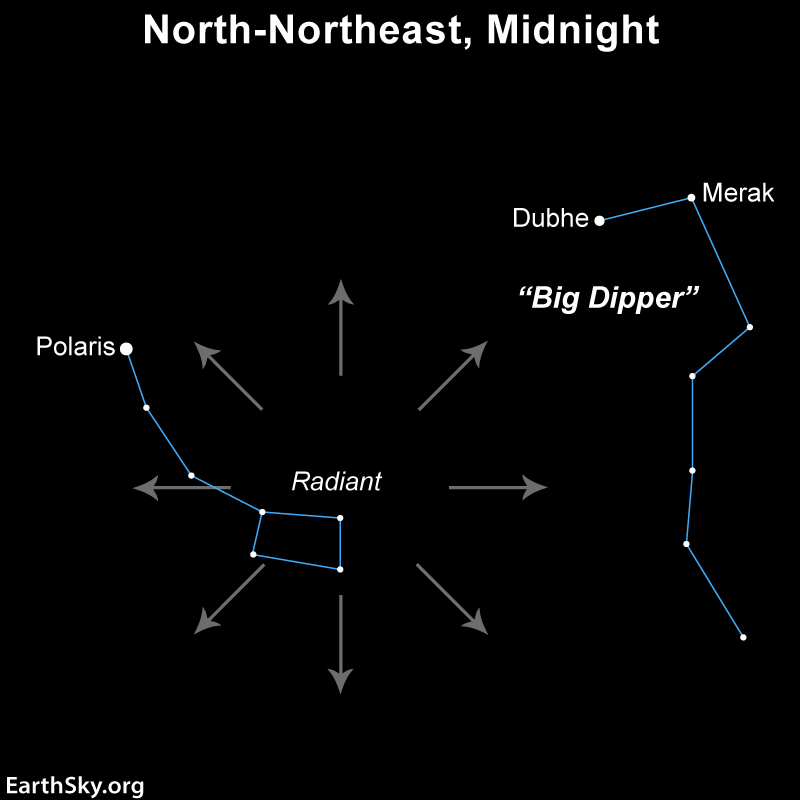
Meteors in the Early January 2024… The Quadrantids
The last quarter of the moon will be bright on the night of January 4th, with the moon rising around midnight. The nearest last quarter moon will come late at night on January 3rd, before reaching its highest point and rising in the north-northeast after midnight. The radiant point for the Quadrantids meteor shower, known for its famous presence near the Big Dipper asterism, can be seen near the radiant point nowadays. As this shower is mostly for the far-northern sky, it is not as good for the Southern Hemisphere. The radiant point of the Quadrantids is far north in the sky’s dome, making it far from the north. Under dark sky conditions with no moon, the Quadrantids can produce over 100 meteors per hour when the radiant point is high in the sky. The peak of the Quadrantids is expected to occur under ideal conditions. The Quadrantids meteor shower runs from mid-January to mid-November each year, with the peak activity centered on January. However, during any time within that interval, you might see a streak from a Quadrantid meteor. Note that the Quadrantids shower is one of the four major meteor showers each year, with a sharp peak. According to an article in the Icarus journal in 2017, the Quadrantids meteor shower runs from mid-January to mid-November each year.
Learn more: Everything you should be aware of regarding Quadrantid meteors.
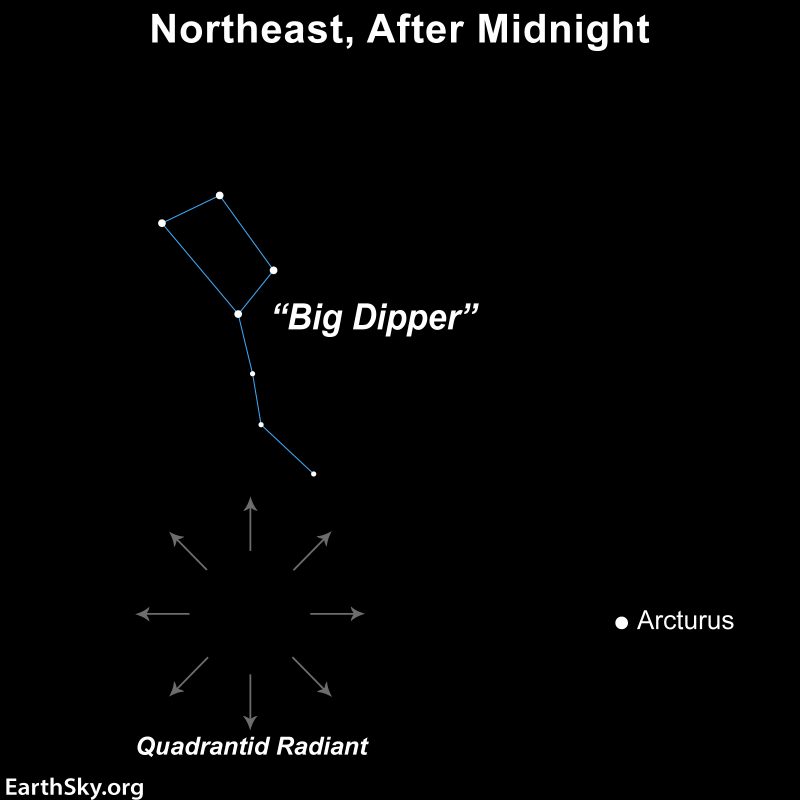
April 2024 meteor shower … The Lyrid meteor shower
There will be a smaller number of Lyrid meteors visible in the Southern Hemisphere. Nonetheless, there is still a possibility of spotting some! The point from which this meteor shower originates is located far north on the celestial dome. For more information on Lyrid outbursts, please continue reading. In perfect conditions, with a dark sky and no moon, it is possible to observe between 10 to 15 Lyrids per hour. The Lyrids are renowned for occasional surges that can bring rates of up to 100 meteors per hour! The shower will occur from April 15 to April 29. During the peak morning of the Lyrid meteor shower in 2023, a bright waxing gibbous moon will be present in the sky. The nearest moon phase will be the full moon, which will occur at 23:49 UTC on April 23. The radiant point of the meteor shower will rise before midnight and reach its highest point in the sky at dawn. The brightness of the waxing gibbous moon will affect meteor watching. In 2024, the full moon will occur at 23:49 UTC on April 23. Unlike some showers that last for weeks, the peak of the Lyrids is a narrow window. The predicted peak time is 9:23 UTC on April 22. The best time to observe the meteor shower in 2024 will be from late evening on April 21 until dawn on April 22.
Learn more: Everything you need to understand about Lyrid meteor showers.

May 2024 shooting stars … The Eta Aquariids
The Eta Aquariids, the most impressive meteor shower of the year, is a favorite among those in the Southern Hemisphere. It will take place from April 15 to May 27, with the peak expected a few days after the New moon falls at 03:22 UTC on May 8. According to the American Meteor Society, the peak is predicted to occur at 8:43 UTC on May 5, during which a higher number of meteors can be observed. The best time for viewing is in the early hours before dawn on May 5 and 6, 2024. The radiant, which ascends during the early morning hours and reaches its highest point at sunrise, will be positioned on the ecliptic, resulting in a lower position in the sky for viewers in the Northern Hemisphere. Conversely, those in the Southern Hemisphere may enjoy a more favorable vantage point, potentially witnessing two to three times more meteors. The mornings surrounding the peak will be dark and free from moonlight, as the New moon will occur a few days prior. Therefore, there will be no moonlight to obstruct the view of the meteors.
Learn more: Everything you should be aware of regarding Eta Aquariid meteor showers.
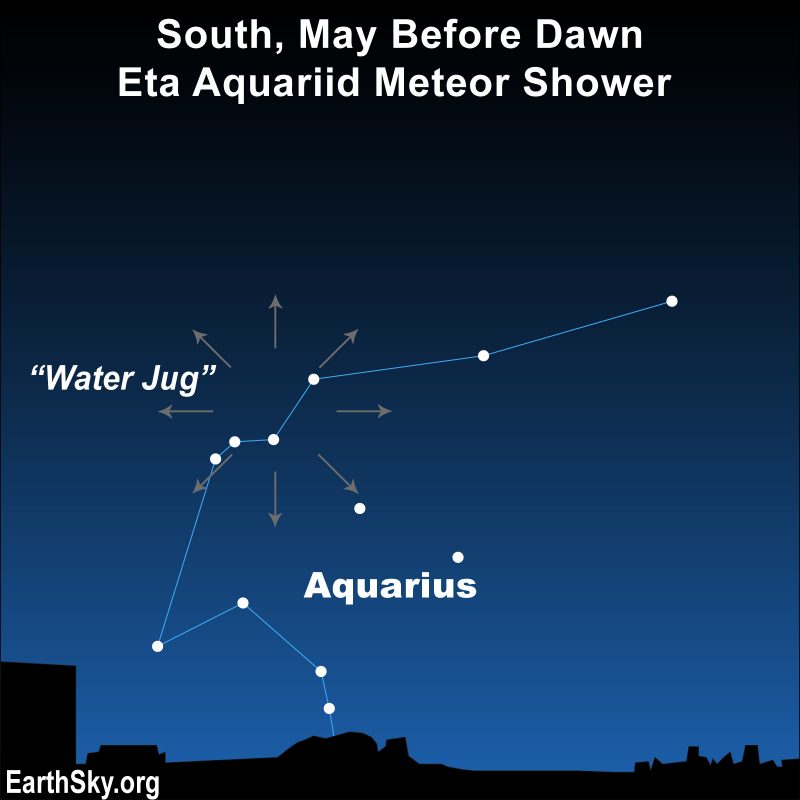
Daytime meteor shower in June 2024… The Arietids
Most meteor showers are easy to observe. Just look up and find a dark sky. But what about meteor showers that happen in the daytime when the sun is up? Sometimes the Arietids are said to be the most active meteor shower during the daytime. Their peak is predicted to be on the morning of June 7, 2024. You might be able to catch some Arietids in the dark hour before dawn.
The Arietids are sometimes said to be the most active shower during daytime. They have a rate of up to 200 meteors per hour, and radar echoes and meteor counts indicate a strong zenithal hourly rate (ZHR) of 60 meteors per hour. However, you won’t be able to see them because the sun comes up and it becomes tricky to observe daytime meteor showers. So, you should watch for them in the dark hour before sunrise, in the direction of the sunrise. The meteors appear to radiate from the point radiant in the constellation Aries, also known as the Ram. The peak will occur around the mornings when the moon is completely free. In 2024, there will be a new moon at 38:12 UTC on June 6. You will find this constellation in the east before sunrise. The meteors appear to radiate from the point radiant in the constellation Aries, also known as the Ram. The peak will occur around the mornings when the moon is completely free. In 2024, there will be a new moon at 38:12 UTC on June 6. Watch for them in the dark hour before dawn, in the direction of the sunrise. There is a predicted peak on June 7, 2024. Watch from May 29 to June 17.
Learn more: Arietids, the most active meteor shower that occurs during the day.
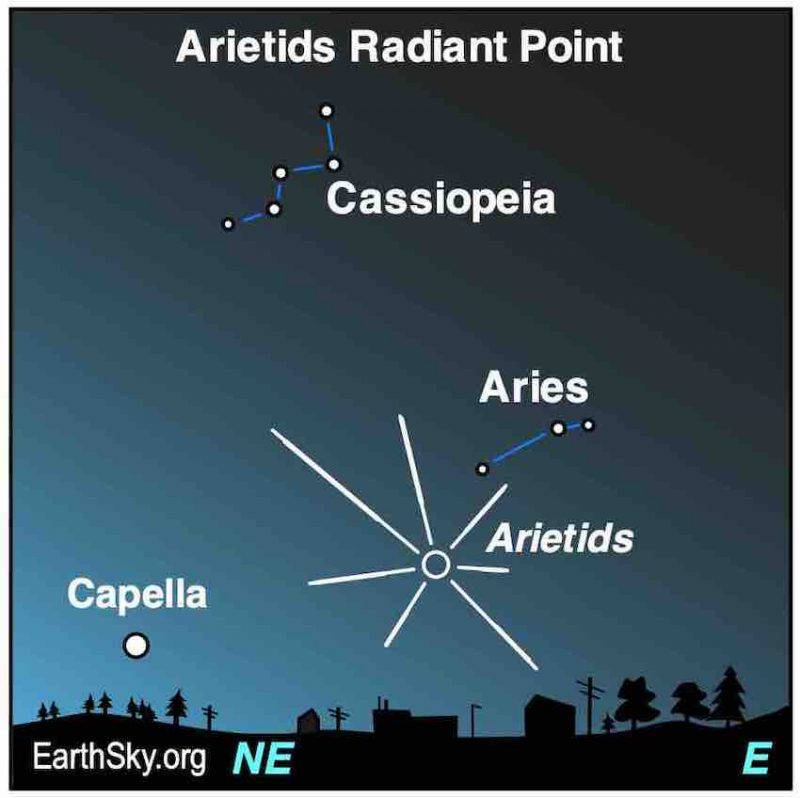
Meteors from the Delta Aquariids Meteor Shower occurring from late July to mid-August 2024.
Following the passage of the meteor, there are short-lived trails of glowing ionized gas that can last for a second or two. Approximately 5% to 10% of the Delta Aquariid meteors leave behind persistent trains. Therefore, it is crucial to have a dark sky without the presence of the moon. Delta Aquariid meteors are generally dimmer compared to Perseid meteors. However, the shower can still be impressive for observers in latitudes similar to those in the southern United States. Skywatchers in high northern latitudes tend to disregard this shower, similar to the Eta Aquariids in May. The Delta Aquariids are more favorable for the Southern Hemisphere, particularly in July. If you observe the sky in early August, you will commonly witness a mixture of Delta Aquariids and Perseids. Under ideal conditions during the peak, the maximum hourly rate of Delta Aquariids can reach 15 to 20 meteors in a moonless dark sky. In 2024, the last quarter moon will occur at 2:51 UTC on August 1, which is the closest moon phase to the shower. The radiant point rises in the evening, reaches its highest point around 2 a.M., And becomes low in the sky by dawn. The duration of the shower spans from July 18 to August 21. It is recommended to watch the shower from late July through early August, starting from the evening until dawn. The shower continues steadily during this period, coinciding with the August Perseids. However, there is no distinct peak for this shower. The predicted peak is expected to occur on July 30, 2024, at 15:16 UTC.
Learn more: Everything you need to understand regarding Delta Aquariid meteor showers.
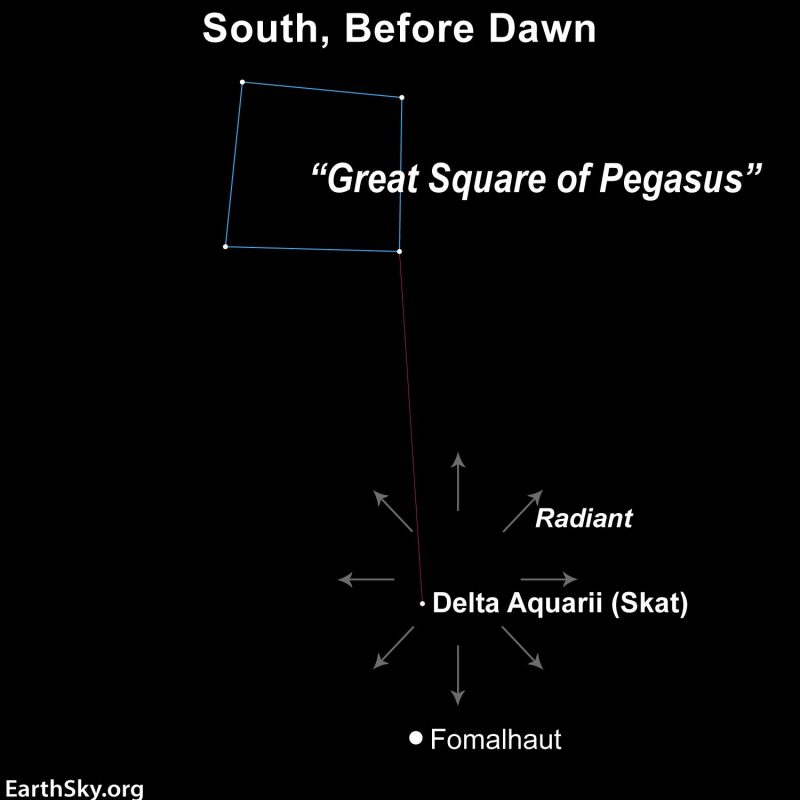
Meteors from the Perseids meteor shower between mid-July and mid-August 2024
The Perseid meteor shower is beloved by most, perhaps because it is the most beloved meteor shower in the Northern Hemisphere. Trains frequently leave during the shower. The meteors are colorful and the shower is steady and rich, especially during the peak in early August. The shower will not be interfered with by the waning crescent moon in 2023. Under dark skies with no moon, skywatchers frequently report 90 or more meteors per hour. Ideal conditions are expected during the peak. The shower lasts from September 1 to July 14. You will have dark skies until dawn, and then the moon will set around midnight, creating the best conditions for viewing. The first quarter moon falls on August 12 at 15:19 UTC. See the chart below for more details. The radiant rises in the middle of the night and is highest at dawn. The shower often peaks just before dawn. This shower rapidly falls off and then gradually rises to a peak. The best time to watch is often just before dawn. The Perseids will be best viewed around midnight. During the peak in 2024, the moon will be illuminated at 50% and in its first quarter. The best time to watch the Perseids is from dawn until midnight, starting around midnight. So the best mornings to watch are probably August 13 and 12. The peak is predicted for August 12, 2024, at 14:00 UTC.
Learn more: Everything you need to understand about Perseid meteor showers.
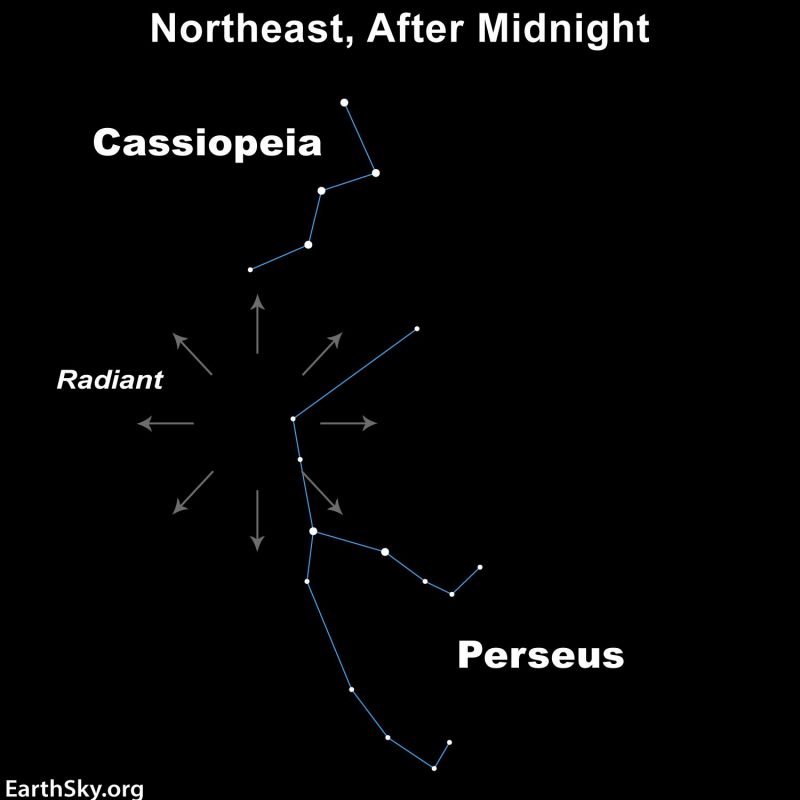
Resources for Observing Meteor Showers
Discover a Dark Sky Location, provided by the International Dark Sky Association.
Heavens-Above: Satellite forecasts tailored to your specific position.
Stellarium Online: Personalized star charts based on your current position.
Dark Site Finder, created by astrophotographer Kevin Palmer.
Blue Earth Explorer.
EarthSky’s suggestions for meteor enthusiasts.
What is the reason for the presence of a radiant point in meteor showers?
RASC Observer’s Handbook, an indispensable tool for stargazers. The peak dates dates and times listed in this article are (mostly) from there.
Guide to Meteor Showers: Images from the EarthSky Community
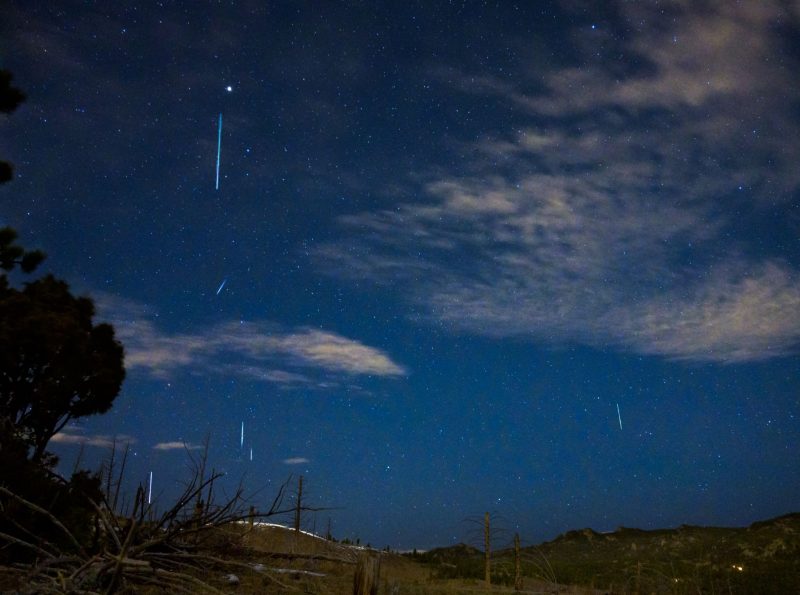
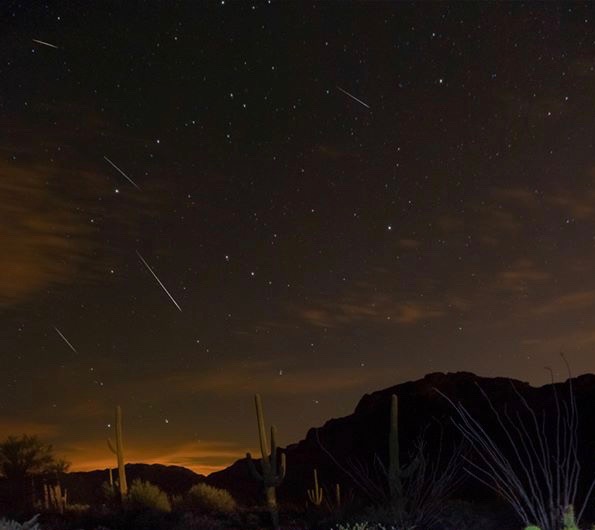
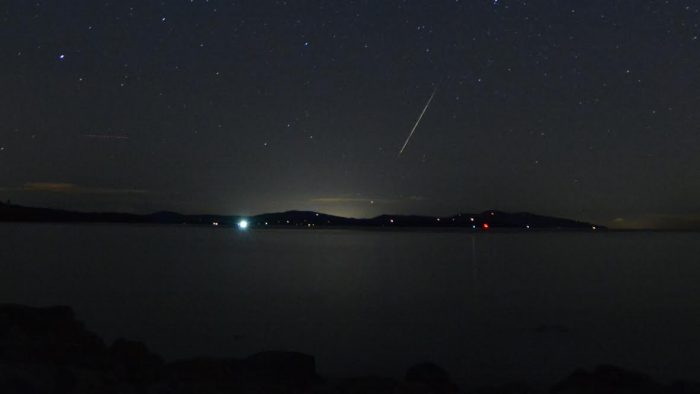
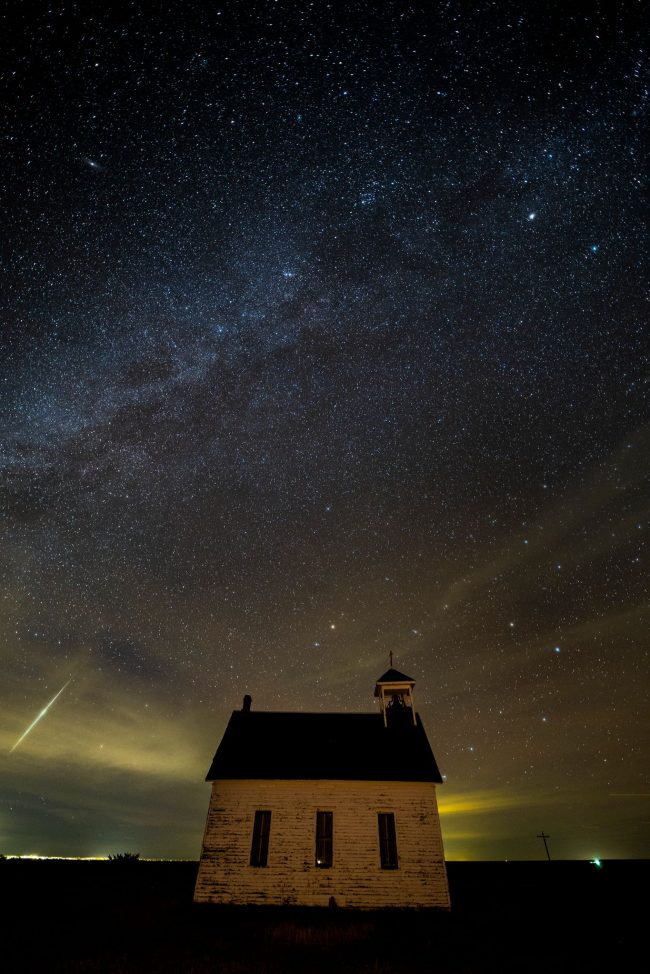

Wise words about meteor showers
A wise person once said that meteor showers are like fishing. You go, you enjoy nature … And sometimes you catch something.
In October 2023, we will experience multiple meteor showers. The Taurids will begin sprinkling in the early part of October, followed by the Draconids and Orionids later in the month. This year, we are fortunate to have an abundance of meteor showers. To sum it up, there are several meteor showers lined up for us in the near future.
The peak times for meteor showers are provided by Robert Lunsford, an American meteorologist, noting predictions that vary many times from top to back.